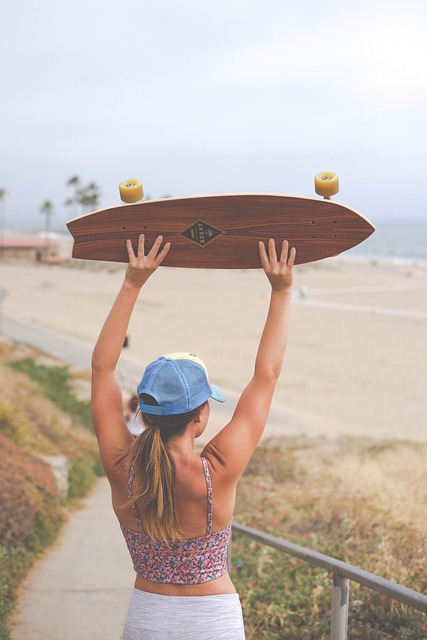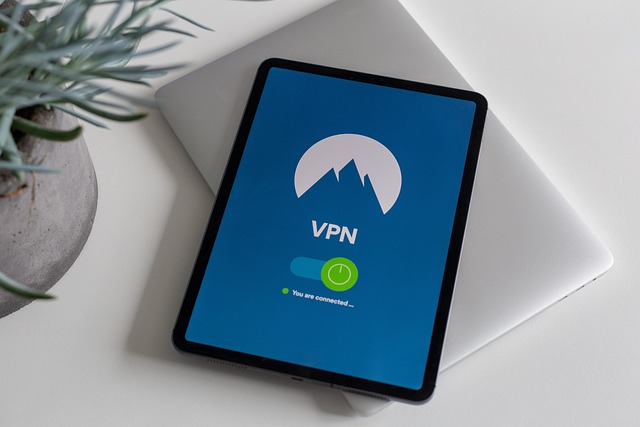Longboarding offers a fun and accessible activity for newcomers, combining cruising, carving, and unique movements. Beginners should focus on learning control and safety using body weight and board flex. Choosing a stable, beginner-friendly longboard with larger wheels, softer bushings, and a wider shape aids in turning, stopping, and speed control. Mastering basic skills like cruising, turning, and smooth stops is crucial for a smooth experience. Practice in local parks or neighborhood streets for varied terrain and safe learning. Build stamina and balance through regular training sessions and core exercises. Connect with the supportive longboarding community for mentorship and friendships.
“Dive into the world of longboarding with our comprehensive guide, tailored for those taking their first steps. From understanding the basics to mastering advanced techniques, this article covers all you need to know as a beginner.
We’ll help you choose the perfect board, set it up safely, and learn essential skills like pushing, turning, and stopping. Discover top practice spots, effective training routines, and tips on connecting with the welcoming longboarding community.
Whether you’re a novice or looking to enhance your skills, this is your go-to resource for a fun and fulfilling longboard journey.”
Understanding Longboarding: A Beginner's Overview

Longboarding is a fun and accessible activity for those new to skateboarding, offering a unique blend of cruising, carving, and dancing on wheels. For beginners, it’s essential to grasp the basics of longboard control and safety before hitting the streets. The key lies in understanding how to use your body weight and the board’s flex to perform smooth turns and maintain balance.
A longboard for beginners should be chosen with a focus on stability and ease of learning. Look for boards with larger wheels, softer bushings, and a wider shape, as these features make it easier to turn, stop, and control your speed. With the right setup and practice, you’ll soon be cruising down streets, carving through turns, and enjoying the freedom that longboarding provides.
Choosing the Right Longboard for Your Style and Needs

When selecting a longboard, especially as a beginner, it’s key to align your choice with your intended style and needs. Consider whether you’re leaning towards cruising, carving, or freeride. Each discipline requires different board shapes, flex patterns, and wheel sizes. For instance, a cruiser is ideal for leisurely rides on flat terrain, while a carving board offers a more dynamic experience along curvy paths.
Freeride boards are built for speed and stability on varied surfaces. Look for features that support your learning process: larger wheels for smoother rolls over cracks and bumps, medium flex for balance between pop and stability, and a shape that suits your preferred stance and riding style. Remember, the right longboard will enhance your enjoyment and accelerate your learning curve.
Setting Up Your Longboard: Assembly and Safety Tips

Choosing the right longboard for beginners is just the first step; proper assembly and safety considerations are crucial to ensure a smooth riding experience. When setting up your new longboard, double-check that all parts are securely fastened, especially the trucks, wheels, and bearings. Ensure the deck is free from any warping or defects, and adjust the truck angle according to your preferred stance. For safety, invest in high-quality protective gear, including elbow and knee pads, a helmet, and wrist guards, as falling is an inevitable part of learning, especially on a longboard for beginners.
Remember that each longboard has unique features, so refer to the manufacturer’s instructions for specific assembly tips. Regularly maintain your board by checking for loose parts, greasing bearings, and inflating wheels to avoid flats. With proper care and attention to detail during setup, you’ll be cruising along with confidence in no time.
Mastering the Basics: Learning to Push, Turn, and Stop

For those new to the world of longboarding, mastering the fundamentals is key to a smooth and enjoyable experience. The first steps involve learning how to push, turn, and stop effectively. Pushing provides the initial momentum, so practice finding your balance while propelling yourself forward. Turning is an art in itself; start with simple carving turns to get a feel for shifting your weight and leaning into the curve. Mastering these basic maneuvers allows beginners to build confidence and control as they progress on their longboard journey.
Stopping is another crucial skill, especially when navigating busy streets or controlling speed downhill. Beginners should practice gradual, controlled stops by learning to apply the brakes gently. This prevents sudden skids and helps develop an instinct for balancing during deceleration. With patience and practice, these basic skills become second nature, forming a solid foundation for more advanced longboarding techniques.
Enhancing Your Skills: Advanced Techniques for Beginners

For those just starting out with longboarding, it’s all about building a strong foundation. Begin by mastering the basics—gaining control while cruising, learning to turn, and practicing smooth stops. These fundamental skills are crucial for any beginner, serving as a solid base from which to explore more advanced techniques.
As you become more comfortable on your longboard, start incorporating subtle maneuvers like carving turns, which involve flowing in a gentle arc instead of sharp corners, and adding speed control through pump tricks. These advanced moves not only enhance your skills but also open up new possibilities for enjoyment on your board, transforming your rides from mundane to truly exhilarating.
Finding the Best Practice Spots: Local Parks and Streets

For those new to longboarding, finding the perfect practice spot is key to building confidence and skill. Local parks offer a safe, open space with various terrain options, ideal for beginners to learn turns, carves, and speed control. The even ground allows for easy maneuvering without the challenges of steep slopes or rough surfaces. Many parks also have dedicated skate areas with smooth concrete, providing an excellent surface for practicing tricks and building endurance.
Moreover, neighborhood streets can be another great resource for novice longboarders. Look for residential areas with low traffic and smooth, flat pavement. These quiet streets allow for safe practice runs, helping beginners get a feel for acceleration, braking, and maintaining balance at different speeds. Remember to always prioritize safety, wear protective gear, and check local regulations regarding skating in public spaces.
Building Stamina and Balance: Training Routines for New Riders

For new longboard riders, building stamina and balance is key to enjoying their rides and progressing quickly. Starting with shorter, regular training sessions is ideal. Focus on smooth, controlled movements, gradually increasing both distance and time spent riding. Incorporate exercises that target core strength and leg muscles, like squats and planks, to enhance stability.
Use a variety of training methods, such as practicing starts from a stop, maintaining speed on flat ground, and navigating gentle slopes. Regularly reviewing proper longboard form—including foot placement, body positioning, and carving technique—will also contribute to improved stamina and balance. Consistency is vital; even just a few minutes per day can make significant differences in your riding ability over time.
Longboarding Community: Connecting with Fellow Beginners

When you’re just starting out with longboarding, one of the best ways to enhance your experience is by diving into the welcoming community that surrounds this exciting sport. Connecting with other beginners can provide invaluable support and guidance as you learn the ropes. Many local skate parks or longboard meetup groups offer a space for newcomers to gather, share tips, and even find mentors who can teach them tricks and help them improve their skills.
The sense of community within the longboarding world is often likened to a friendly family, where folks from all walks of life come together to enjoy the thrill of cruising, carving, and dancing on their boards. By engaging with this community, you’ll not only gain practical knowledge but also foster friendships that can make your longboarding journey even more enjoyable and memorable.
